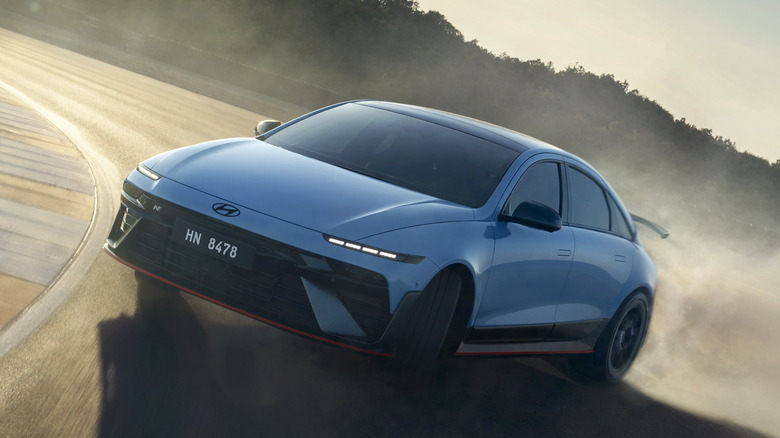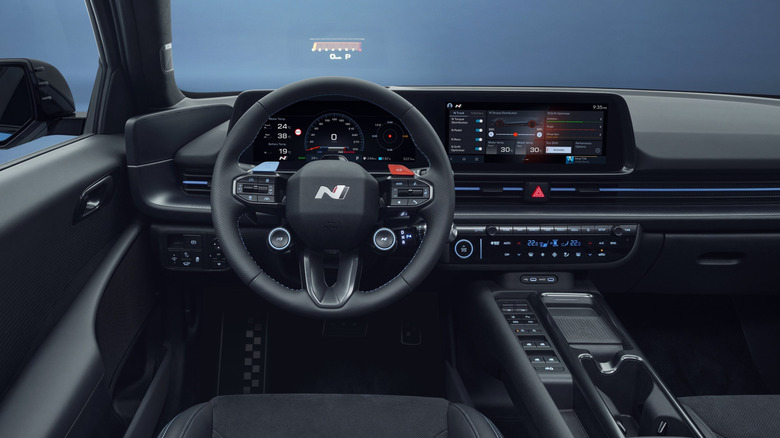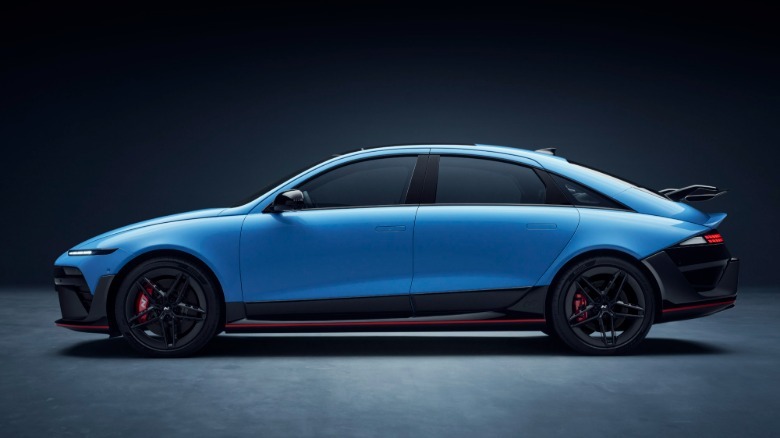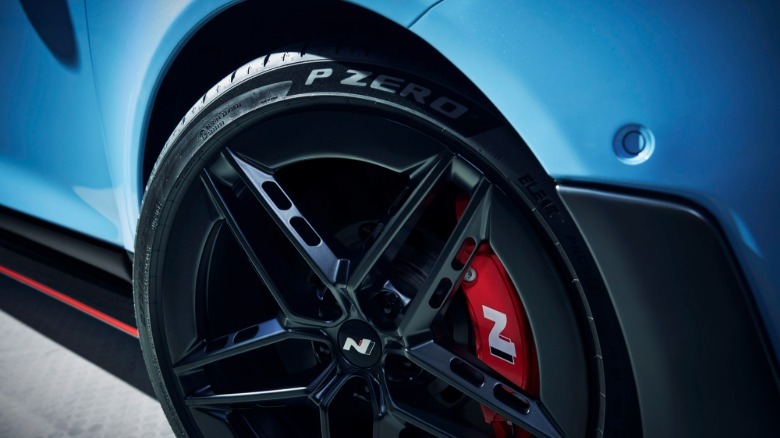When I first drove the Hyundai Ioniq 5 N, it was a revelation. It wasn’t just quick in a straight line like so many other electric vehicles are. It also proved to be right at home on the track, while also being an absolute hoot in the canyons. Still, it’s a crossover, and not everyone wants a crossover. For those who were biding their time, holding out for a high-performance Hyundai sedan, I have great news. The Ioniq 6 N is now here and ready to give the Tesla Model 3 Performance a run for its money.
Design-wise, it’s basically a racier version of the refreshed Ioniq 6, with wider fenders, a rear wing, and cooler wheels, so if you don’t like the way the regular Ioniq 6 looks, the N probably isn’t going to change your mind. That’s fine, though. Those who love it will love it, and those who hate it will hate it, but at the very least, no one can honestly say they’re on the fence about the design. Personally, I love it, but maybe what I love more is that Hyundai is clearly OK with alienating some buyers. We need more cars that don’t try to make everyone happy. That’s how you get mediocre, uninspiring cars.
Inside, it appears to be pretty standard Ioniq 6 but with more aggressively bolstered seats and a few N logos. You also get what appears to be the Ioniq 5 N’s steering wheel, and it’s probably safe to assume the infotainment system will include the same level of granular control over performance settings that its crossover sibling offers. Other than that, it isn’t wildly different than what you get in the regular Ioniq 6, but it also isn’t like BMW commissions an entirely new interior for the M3, either.
Ioniq 6 N performance
Like the M3, the real difference between the regular Ioniq 6 and the N is how the N drives. And, while we haven’t gotten the chance to drive it yet, I’m going to bet it’s at least as great to drive as the Ioniq 5 N. You do get the same dual-motor setup, good for up to 641 horsepower and 568 pound-feet of torque, after all, and Hyundai says it’ll hit 62 mph in just 3.2 seconds on its way to a top speed of 160 mph. If that isn’t quick enough for you, I don’t know what to tell you.
Expect similar chassis and suspension upgrades found in the Ioniq 5 N, but — with a lower center of gravity and a more aerodynamic shape — there’s a good chance it will be an even more enjoyable track car than its crossover counterpart. And, of course, there’s the fake dual-clutch transmission mode, as well as a few other features that promise to make the Ioniq 6 N the “corner rascal” that Hyundai insists we’ll get, including a drift mode.
Hyundai also claims it put a lot of work into the cooling and battery management systems, which should improve on-track performance and longevity and, as Jason Fenske recently explained, should also allow for more aggressive regenerative braking. That would, in turn, help boost overall range. Sadly, Hyundai has yet to announce any official range figures, but you can expect it to match, if not exceed the Ioniq 5 N’s 221-mile range.
Hyundai also hasn’t talked pricing or said when the Ioniq 6 N will go on sale here, so don’t be surprised if you have to wait until next year before they start showing up on dealer lots.






